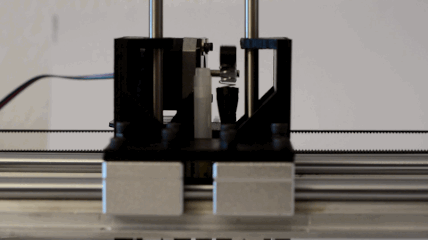
GH: We're so curious to find out: who are you, where are you from, and what do you do?
Tobias: I work as a software developer for a small company in Karlsruhe, Germany. Though I studied Music-Informatics and Musicology, I also always loved the visual side of computer art. In my spare time, among a lot of things, I built a DIY pen-plotter and continue to create generative drawings with it.
Patterns, like Truchet tiles, oriental patterns or spirographs also never fail to deliver new ideas and forms.
GH: What is the underlying philosophy behind your work?
Tobias: I don't take myself or my art too seriously. The best-case scenario for me is that something aesthetically pleasing emerges from a mathematically beautiful algorithm. I try to form it to some degree to become a composition, maybe add some curated randomness and see what happens. I will probably make some mistakes and add some bugs along the way which may become features and get included in ways I wouldn't have been able to come up with without code.
Mostly, I just enjoy maths and algorithms. Playing with both of them can bring great joy. I work with a pen-plotter because I love the analog aspect of that, but I also create purely digital moving or still images.
GH: Can you pick an artwork and describe your workflow?

Tobias: This one is a classic example for me. Two algorithms form the basis of this plot. First I created a Vogel Spiral, which is just a way to place a lot of dots on the plane very evenly spaced. This beautiful pattern also appears a lot in nature. You can find it in the center of sunflowers for example. The further away the spiral grows, the more dots I removed or nudged in some direction.
As a second step, I used a circle-packing algorithm in its most basic form, where you let all dots grow until they almost touch each other.
That's it. There is really not much to it, but maybe that’s what I enjoy about this one.

GH: What's been inspiring you lately?
Tobias: I could name so many things here and the answer changes from day-to-day. Fractals in any form are always a great source of inspiration. Patterns, like Truchet tiles, oriental patterns or spirographs also never fail to deliver new ideas and forms. Neither do spirals, labyrinths, trees, graphs, physical simulations, number sequences, flowers... the list goes on forever. There is just so much stuff out there in e.g. nature, architecture, engineering, music or maths. I don't think I will run out of inspiration any time soon.
GH: Tell us about your setup. Where do you create? What tools do you use? Tobias: 'Otter' is my DIY plotter in its second generation. Its brain is a Raspberry Pi that runs my C++ server on it. I can send files for plots to it wirelessly and watch its mesmerising movements for hours. I am by all means no mechanical engineer but it works quite precisely.
The white pen is a Uni-ball Signo rollerball.
Of course, my main tool is the computer where my interface is mostly code. I am writing a constantly growing library that handles all the shapes, geometric calculations, masking, filling and so on. For every new project with new requirements, the library grows and my scripts for plots can usually be kept quite high-level and abstract.
This intern enables me to use code as my primary interface instead of writing graphical user interfaces for projects. As a result, I can not just change parameters but quickly adapt any script to become something entirely new.
– Tobias Grothmann, Karlsruhe, Germany














Kaiser OTC benefits provide members with discounts on over-the-counter medications, vitamins, and health essentials, promoting better health management and cost-effective wellness solutions.
Obituaries near me help you find recent death notices, providing information about funeral services, memorials, and tributes for loved ones in your area.
is traveluro legit? Many users have had mixed experiences with the platform, so it's important to read reviews and verify deals before booking.
Tobias's work in generative art reflects a fascinating combination of creativity and mathematics. His approach of using algorithms to create aesthetically pleasing visuals can be likened to the innovation seen in industries like real estate. Just as he integrates randomness and creativity into his artwork, real estate developments can benefit from unique, innovative designs and technology-driven solutions. For those interested in finding properties that offer both beauty and functionality, https://citizenship-by.investments/ offers a range of services and listings that align with modern architectural trends. Whether you're an artist or an investor, blending creativity with strategy is key to success.
You need to help the T-Rex dinosaur get across the wide desert in the famous and long-running 2D video game Dinosaur Game. Take part today and have fun!